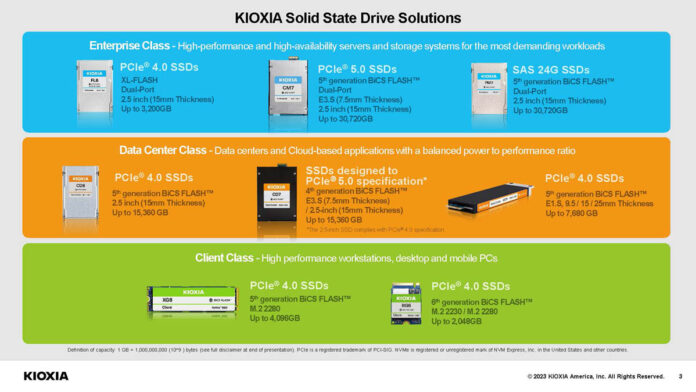At OCP Summit 2023, we have Kioxia announcing another new drive, and this one is quite different. The company has a 30.72TB NVMe SSD, the Kioxia LD2-L. This new drive is designed for ~1PB/ 1U applications. The company is also showing several of its other hyper-scale SSDs at the show.
New 30.72TB Kioxia LD2-L NVMe SSD Announced at OCP Summit 2023
The new Kioxia LD2-L drive is something very different from the company. This is a high-capacity SSD in an E1.L form factor. With capacities of either 30.72TB or 15.36TB per drive, a 32-drive 1U chassis has 983TB or around 1PB/U. The 15.36TB drive offers half of that density.
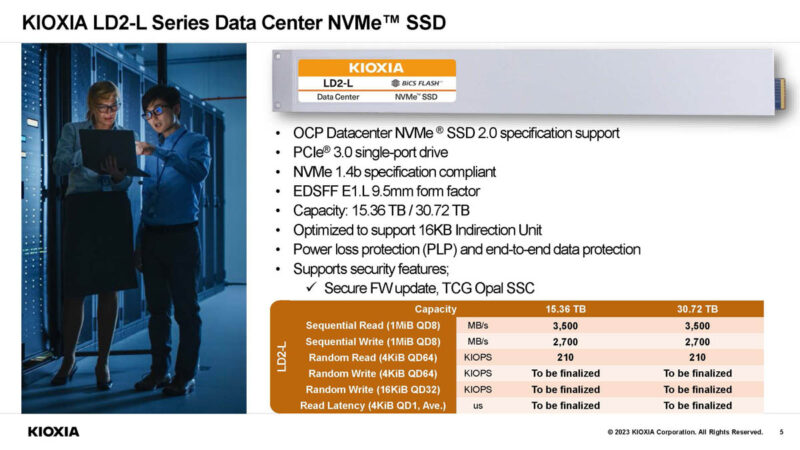
One will notice that this is not meant to be the fastest drive. Instead, it is designed to store a lot of data per U.
The company also showed off a number of its drives at OCP Summit.
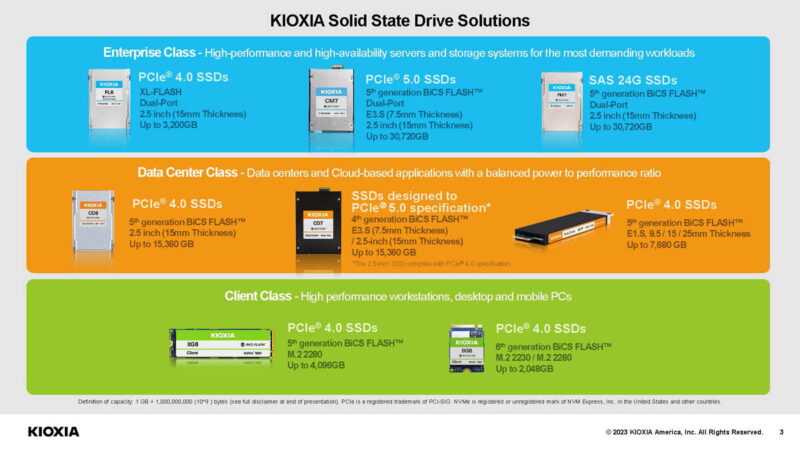
Those drives include the Kioxia XD7P which is the company’s E1.S NVMe SSD. This PCIe Gen5 drive is designed for higher speeds in a smaller form factor and lower capacity points.
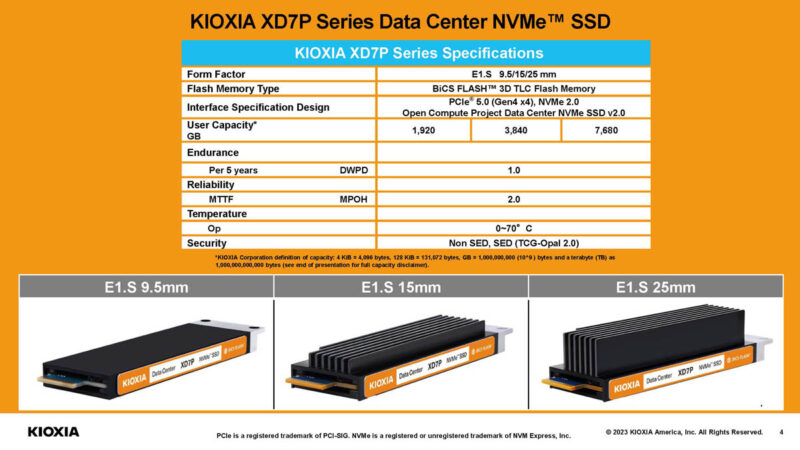
These drives were the main announcement of last year’s OCP Summit 2022.
The Kioxia CD8P is the company’s U.2 2.5″ and E3.S PCIe Gen5 drive.
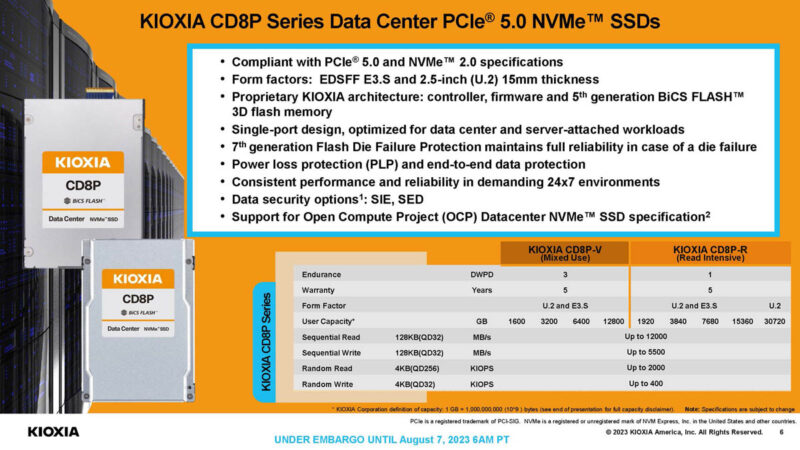
Something we did not notice until this announcement is that there is actually a 30.72TB version. When we saw the Kioxia CD8P-R at FMS 2023 the U.2 drive was listed only up to 15.36TB but that 30TB class drive was in the original launch slide. The “R” stands for read intensive.
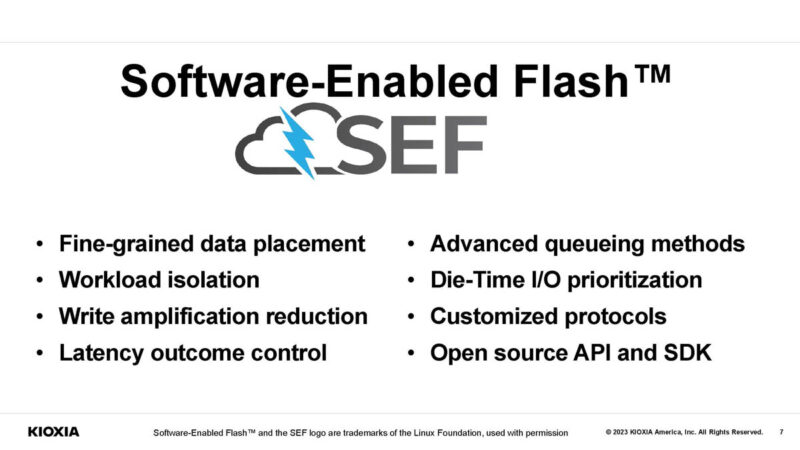
Kioxia also is talking about its Software-Enabled Flash or SEF work at OCP this year.
Final Words
Overall, the Kioxia LD2-L is a really interesting drive because it is very different. One of the big stories in the industry today is how we have PCIe Gen5 platforms, but many storage applications do not need PCIe Gen5 speeds. Indeed, we are not at the PCIe Gen4/Gen5 crossover point yet from a volume perspective. Perhaps there is a market for lower speed but also larger E1.L drives to get massive density in racks.

